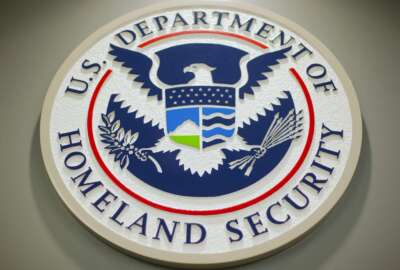GAO codifies new workplace flexibilities as other feds prepare for more in-person work
The Government Accountability Office is agreeing to give staff a range of hybrid and remote work options,.
The Government Accountability Office is agreeing to give staff a range of hybrid and remote work options, as well as a more streamlined way for staff to transfer to other GAO offices.
GAO struck the deal with the International Federation of Professional and Technical Engineers Local 1921, which represents more than 2,500 analysts, auditors, technical specialists, and support staff at the agency.
Benjamin Emmel, president of IFPTE Local 1921 told Federal News Network in a recent interview that the agreement takes lessons learned since the start of the COVID-19 pandemic and incorporated them into GAO’s workplace policies.
“We conduct our work wherever the federal government spends money. Now, this agreement expands the workplace flexibilities that the agency can utilize,” Emmel said. “It’s going to help employees manage their work and life, maintain their high productivity. And in return, GAO can be a good steward of taxpayer dollars and recruit and retain talented employees from across the country.”
The recent agreement expands on GAO’s negotiated telework program, which allowed eligible employees to telework up to four days a week.
“Our prior program allowed employees to easily shift to the maximum telework during the pandemic period,” Emmel said. “And so really what we’re doing is expanding upon that and using the lessons learned throughout that period, and codifying policies that work going forward.”
The new agreement gives GAO employees three different tiers of workplace flexibility. They can continue to telework for a set number of days each pay period, or opt for a hybrid option, and report as needed to GAO headquarters or a nearby field office.
GAO employees can also become fully remote, and work from home or another approved location, as well as travel for work when needed.
Employees have to apply for which flexibility tier they’d prefer, but that decision depends on a conversation with their supervisors.
“Ultimately, it’s on GAO’s management to approve or disapprove those agreements, based on what their job tasks are, and what their duties require, so that we can continue our agency mission,” Emmel said.
Some employees will still primarily work on-site, or have job duties that will require more of an in-person presence than others.
“Our work auditing the federal government and supporting the Congress continues. We’ll still be writing our reports, conducting our fieldwork, supporting our testimonies and briefings on the Hill,” Emmel said.
Operations staff, many of whom kept working onsite throughout the pandemic, will continue to manage GAO’s facilities, IT systems and security.
“In-person work will continue. It’s really just the steady-state requirements that may be changing for employees, and there’ll be a greater range of flexibilities than what was previously offered,” Emmel said.
The union’s bargaining team worked with GAO management to craft the new policy, after studying some best practices of what works in the public and private sector when it comes to workplace flexibility.
However, GAO, a legislative branch agency, is a different breed from most agencies.
Many federal employees working in executive branch agencies are preparing to head back to the office more regularly this fall, or in the coming months, after the Office of Management and Budget directed agencies to increase “meaningful” in-office work.
Emmel said that rather than setting a one-size-fits-all approach, GAO’s new agreement gives employees and management multiple options to structure their work life, consistent with best practices from other leading organizations.
“It’s going to look different for every agency, depending on the mission. But I wholeheartedly agree with this concept that meaningful in-person work is ultimately the goal. It’s something that we were intentional in thinking about during this negotiation process,” he said.
Emmel said the union expects the new workplace flexibility agreement will make GAO a “model agency” for work-life balance. GAO is already the top-ranked midsize agency in the Best Places to Work in the Federal Government, as tracked by the Partnership for Public Service. GAO now has received the top workplace rating three years in a row.
“We find that collaboration between our agency management and the union is one of the things that has made our agency the best place to work in the federal government for years,” Emmel said.
Emmel said the workplace flexibilities will serve as a recruitment incentive for an agency that’s already top-rated for employee morale, but will also help recruit in-demand experts who might seek some of the workplace flexibilities available in the private sector.
“It’s clear that what both parties in this agreement wanted is that we wanted our in-person work to be deliberate and impactful,” Emmel said.
Copyright © 2025 Federal News Network. All rights reserved. This website is not intended for users located within the European Economic Area.
Jory Heckman is a reporter at Federal News Network covering U.S. Postal Service, IRS, big data and technology issues.
Follow @jheckmanWFED






